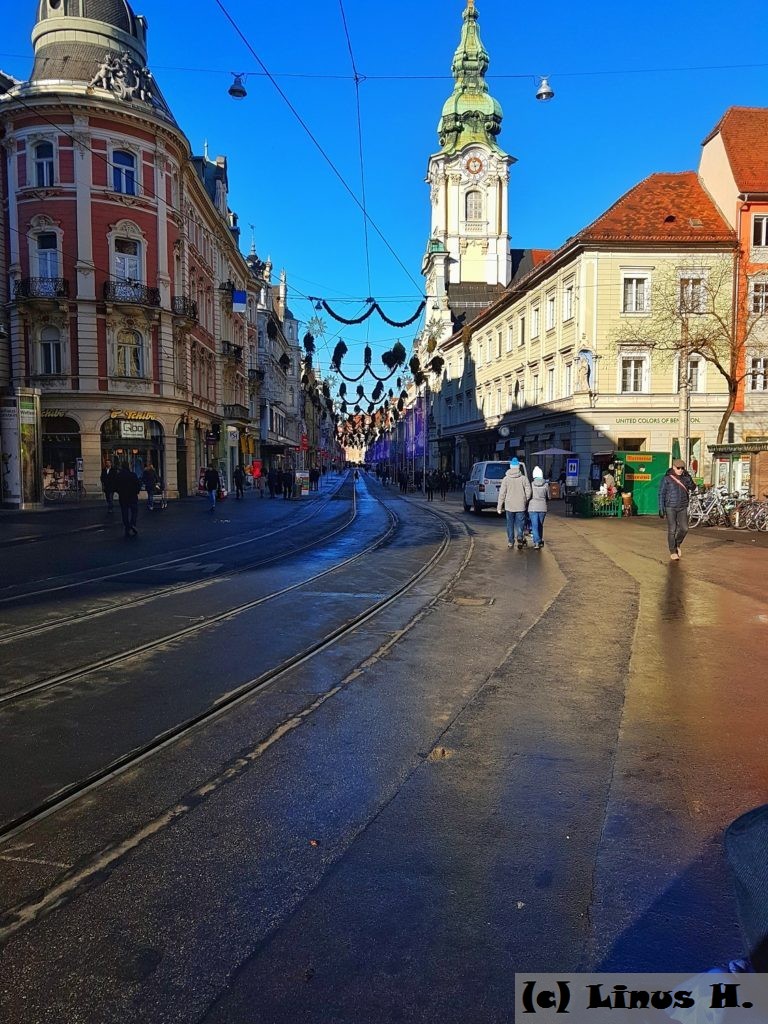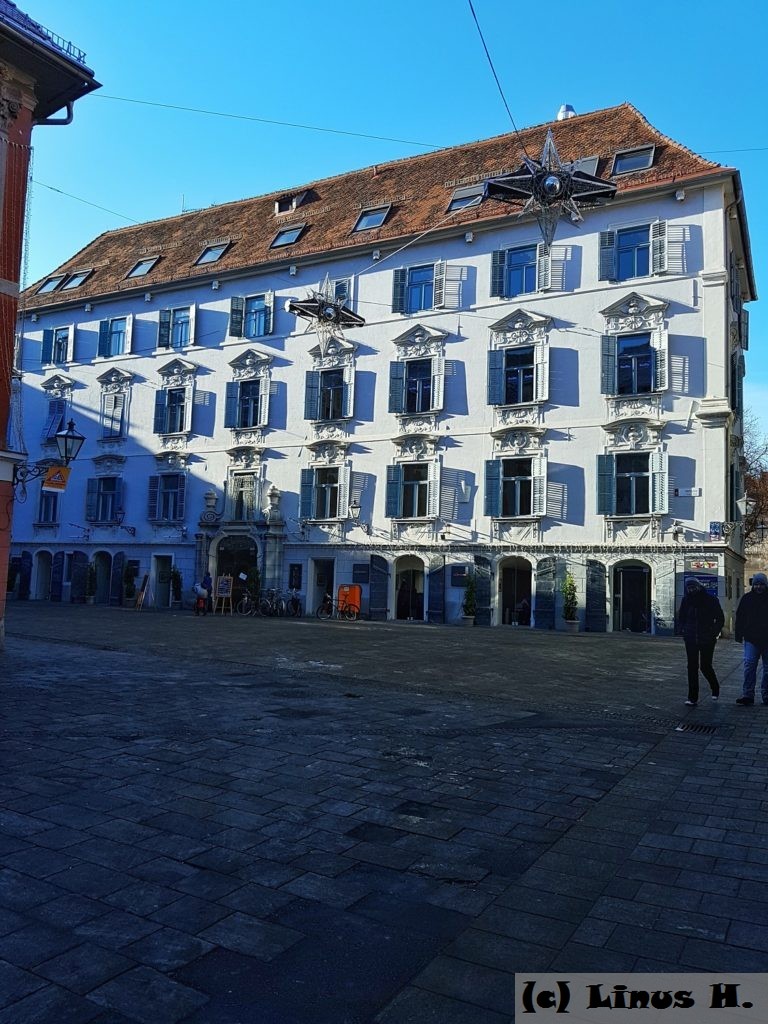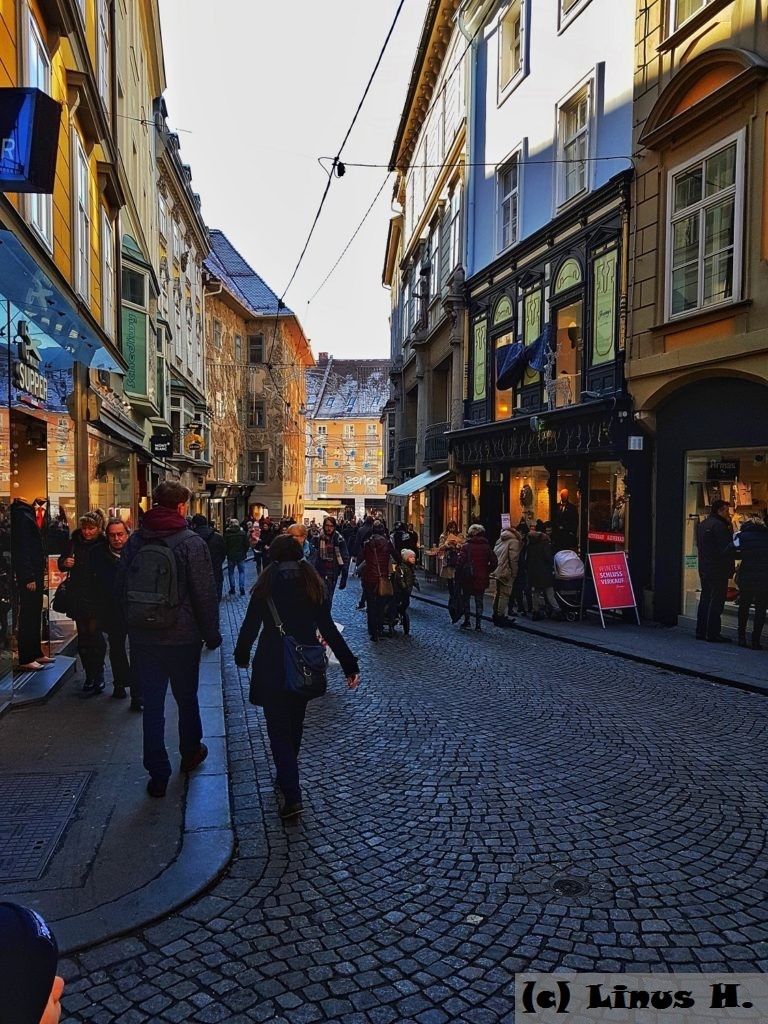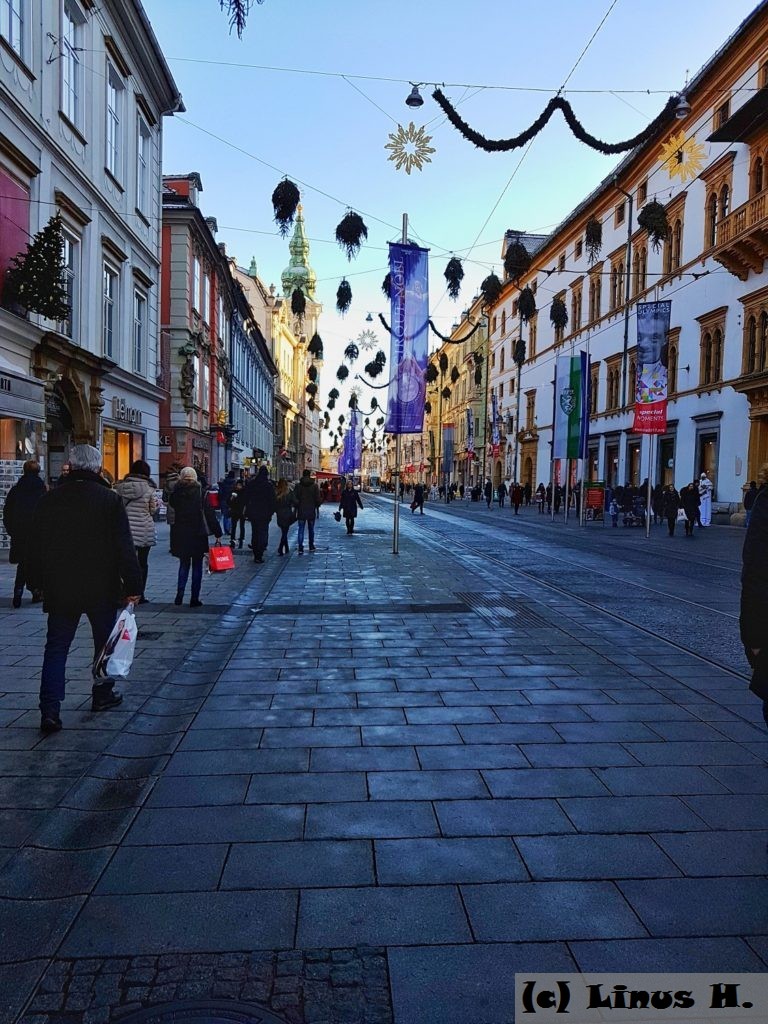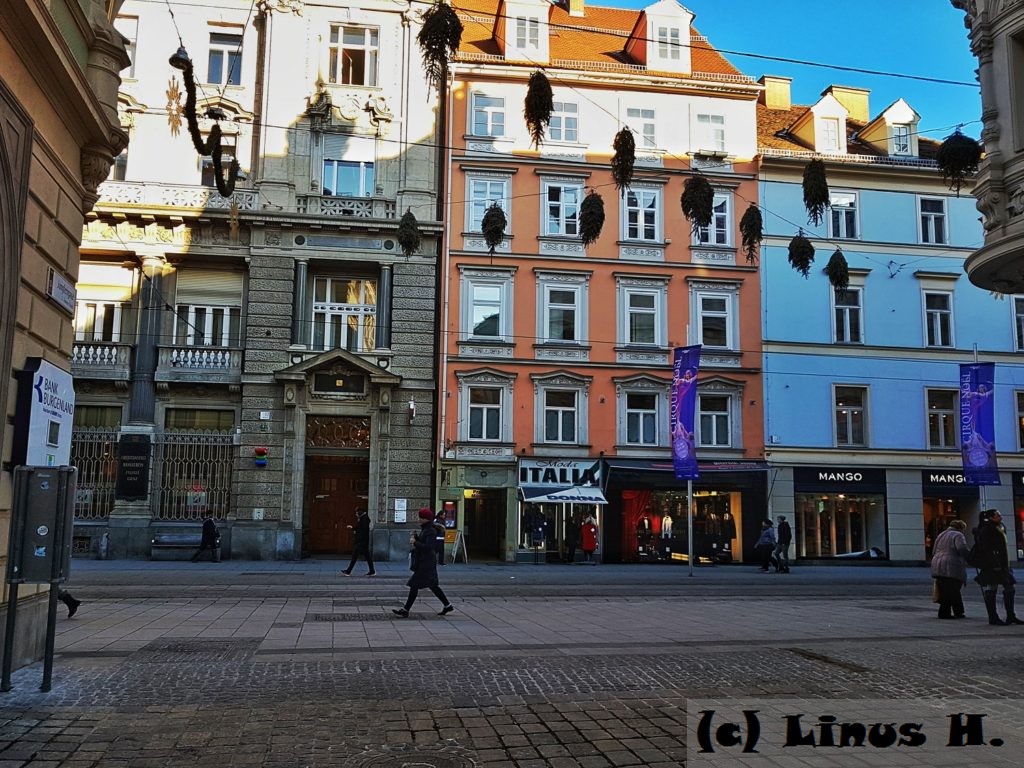My first term at TGS came to an end after three amazing months in Peru and the US unlike anything I had experienced ever before. The first of my two flights, with a flight time of over 10 hours by far the longer one, was fairly uncomfortable because right after takeoff the lady in front of me put her seat back completely and left it there until the landing, and despite it being a night flight I wasn’t able to sleep more than about half an hour. After immigrating into the European Union in Schiphol I waited at the gate for around two hours and then got on my flight back to Berlin, where I met a Polish student on his way back home from San Francisco and a South African on the way to Berlin from New York, who happened to be sitting next to me.
I stayed in Berlin for a few days, including Christmas, and then was off on my way to my actual home town – Graz, Austria. It’s located south of the Alps, about 900km from Berlin, and it’s only a little over an hour’s flight between the two towns.
Although I’ve now lived in Berlin for over 13 years and therefore the vast majority of my life, I still feel a lot more connected to Austria, and Graz in particular, not only because most of my family lives there. The overall mentality is quite different in Austria from what it is like in most of Germany, especially the north. Many Austrians generally dislike “the Germans” (we refer to them as “Piefke”), and consider Germany to be a “humor- and intellect wasteland” – except for Bavaria, but in our mind that’s almost a part of Austria. It’s difficult to describe the Austrian mentality in brief, but some of the things that probably characterize us is our very dark humor, taking pride in being Austrian and hating being called German, considering ourselves a cultural world power, nostalgia for the era of Austria-Hungary, and pastries being a totally acceptable lunch.
Graz used to be the center of the Habsburgs before they decided to move to Vienna, but still remained an important city for the empire afterwards with quite a bit of industry and a large train station, which ultimately lead to it being the Austrian city that was most heavily bombarded in the Second World War, with 58 major airstrikes flown against it. There is a mountain in the center of the city, 123m higher than its surrounding, which used to boast a castle. Graz got its name from the Slovenian word Gradec, meaning “small castle”. Well, the castle kept growing and would ultimately be the only one not to be overrun by Napoleon, which made him so furious that he then ordered to blow up the castle. The people of Graz were only able to prevent the two clock towers from being destroyed as well by paying a large amount of money to the French. One of these clock towers, fittingly referred to as der Uhrturm (“the clock tower”) is now the symbol of the city.
Today, Graz is the second largest city of Austria, being home to around 300,000 people and a UNESCO-protected city center as well as a castle at the edge of the city that has the same status. Oh, and a whole bunch of very nice restaurants.
So here you go – a couple photos from the beautiful city center of my home town.

